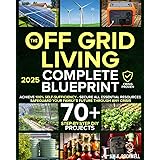Unlock Effortless Beauty: Mastering Low Maintenance Garden Design with Black and White Pebbles
Are you tired of spending countless hours on garden upkeep, battling weeds, and constantly watering, yet still craving a visually stunning outdoor space? The struggle is real for many homeowners. You envision a serene, modern landscape, but the reality of traditional gardening often feels overwhelming. Fortunately, as the video above beautifully illustrates, achieving a stylish and low maintenance garden design is not only possible but also incredibly satisfying. The secret often lies in strategic hardscaping, particularly the elegant use of black and white pebbles and rocks.
Imagine transforming your backyard into a sophisticated oasis, a calm retreat that demands minimal attention while maximizing aesthetic impact. This detailed guide will delve into the art and science of creating such a space, expanding on the visual inspiration provided by the video and offering practical, actionable advice for your very own DIY landscaping project.
1. Why Choose a Low Maintenance Garden Design?
Firstly, let’s explore the compelling advantages of opting for a low maintenance garden design. Modern life is busy; time is a precious commodity. A garden that practically takes care of itself allows you to enjoy your outdoor living space without the burden of constant chores. This approach minimizes weeding, reduces water consumption, and often lowers ongoing costs for fertilizers and pest control.
Consider the benefits: more free time, lower utility bills, and a reduced environmental footprint. This doesn’t mean sacrificing beauty; quite the opposite. By focusing on smart design choices like the strategic placement of black and white pebbles and rocks, you create a strong structural foundation that remains appealing year-round, regardless of seasonal plant changes.
2. The Timeless Appeal of Black and White Pebbles and Rocks
Secondly, the monochrome palette offered by black and white pebbles and rocks is a cornerstone of contemporary and minimalist garden design. This classic combination creates stunning visual contrast and a sense of sophisticated tranquility. It allows other elements, like carefully chosen plants or architectural features, to truly pop without overwhelming the senses.
Imagine if your garden became an extension of your modern home. The clean lines and sharp definition of black and white stones provide an elegant backdrop. White pebbles reflect sunlight, brightening darker corners and creating a sense of spaciousness. Black rocks absorb heat and provide a grounding, dramatic counterpoint. Together, they offer versatility, suitable for everything from Zen-inspired spaces to sleek, urban courtyards.
Varieties of Pebbles and Rocks for Your Garden
When planning your black and white pebble garden, you have several choices. Consider the size, texture, and natural sheen of the materials:
- River Pebbles: Smooth, rounded stones, often naturally polished by water. They come in various shades of grey, black, and off-white, offering a soft, organic feel.
- Crushed Gravel/Aggregate: More angular and interlocking, these provide excellent drainage and a firm surface. Black basalt chips or white marble chips are popular choices.
- Decorative Boulders: Larger rocks that serve as sculptural focal points. A single striking white quartz boulder or a collection of smooth black lava rocks can anchor a design.
- Tumbled Glass: For an ultra-modern, reflective look, tumbled black or white glass pieces can add a unique sparkle, especially under evening lighting.
3. Essential Design Principles for a Stunning Pebble Garden
Thirdly, successful low maintenance garden design goes beyond simply scattering stones. Thoughtful application of design principles ensures your black and white pebble garden is both beautiful and functional. Focus on these key elements:
- Contrast and Texture: This is where black and white truly shine. Use contrasting colors to define areas, create pathways, or highlight planting beds. Mix textures—smooth pebbles alongside rougher rocks or soft foliage—to add visual interest and depth.
- Focal Points: Every great design needs a star. This could be a striking sculptural boulder, a unique piece of outdoor art, a strategically placed drought-tolerant plant, or a water feature. Position it where it naturally draws the eye.
- Flow and Movement: Even with static materials like stones, you can create a sense of movement. Sweeping curves with pebbles, or a dry creek bed effect using varying sizes of black and white rocks, can guide the eye through the garden.
- Balance and Proportion: Ensure your elements are balanced. A large expanse of white pebbles might need a bold black rock feature or a cluster of dark-leafed plants to create harmony. Consider the scale of your garden and choose pebble sizes accordingly.
- Edging: Crisp, well-defined edges are crucial for a polished look and for keeping pebbles contained. Metal edging, concrete borders, or even larger, stacked rocks can provide this definition.
4. The DIY Installation Process for Black and White Pebble Gardens
Next, let’s get practical. Transforming your space into a low maintenance garden design with black and white pebbles is a rewarding DIY project. Proper preparation is key to longevity and minimizing future work. Follow these steps:
- Clear the Area: Remove all existing vegetation, grass, weeds, and debris. This is the most crucial step for long-term low maintenance. Ensure the ground is level or sloped slightly for drainage away from structures.
- Install Weed Barrier Fabric: This is non-negotiable for a truly low-maintenance garden. Lay down a high-quality geotextile fabric. Overlap seams by at least 6-12 inches and secure it with landscape pins. This barrier prevents weeds from growing up through your pebbles while allowing water to drain.
- Define Edges: Install your chosen edging material. This could be flexible plastic edging, metal strips, or concrete blocks. It will keep your pebbles neatly in place and separate them from lawns or other garden beds.
- Spread the Pebbles: Begin spreading your black and white pebbles or rocks. Aim for a depth of 2-4 inches. This depth is sufficient to suppress weeds (even those that sprout on top of the fabric) and prevent the fabric from showing through. Use a rake to evenly distribute the material.
- Integrate Plants (Optional but Recommended): If incorporating plants, cut “X” shapes in the weed barrier fabric at your desired planting locations. Dig the hole, plant, backfill with soil, and then arrange pebbles around the base of the plant.
- Consider Drainage: If your area has poor drainage, you might need to add a layer of coarse gravel beneath the weed barrier fabric to improve percolation.
Imagine the satisfaction of standing back, tools laid aside, admiring the crisp lines and striking contrast of your newly transformed garden. It’s a testament to thoughtful planning and effective DIY execution.
5. Complementary Planting for a Low Maintenance Aesthetic
Furthermore, while pebbles and rocks form the backbone of a low maintenance garden design, integrating drought-tolerant plants adds life, color, and texture without increasing your workload significantly. The key is to choose species that thrive in your climate and complement the minimalist aesthetic.
Here are some plant suggestions that pair beautifully with black and white pebble gardens:
- Succulents and Cacti: Agaves, Sedums, Echeverias, and various cacti offer architectural forms, interesting textures, and require very little water. Their sculptural shapes are perfect against a pebble backdrop.
- Ornamental Grasses: Varieties like Blue Fescue, Karl Foerster Reed Grass, or Little Bluestem provide movement and softness. Their neutral tones and swaying forms contrast wonderfully with the static stones.
- Lavender: Known for its fragrant purple blooms and silvery-green foliage, lavender is drought-tolerant and adds a touch of classic charm.
- Rosemary: Another fragrant herb, rosemary offers evergreen foliage and small blue flowers, thriving in sunny, dry conditions.
- Yucca: Bold, spiky, and extremely hardy, Yuccas make excellent focal points in a rock garden setting.
- Groundcovers: Creeping Thyme or various Sedums can soften edges and add pockets of green or flowering color without becoming high-maintenance.
When selecting plants, think about their mature size, sun requirements, and water needs. Group plants with similar requirements together to simplify irrigation.
6. Long-Term Care for Your Black and White Pebble Garden
Finally, the “low maintenance” promise holds true, but it doesn’t mean “no maintenance.” A few simple, periodic tasks will keep your black and white pebble garden looking pristine and ensure it remains a truly low maintenance garden design:
- Occasional Weeding: Even with a weed barrier, a few persistent weeds may find their way. Pull them out promptly to prevent them from establishing. This is much easier in a pebble garden than in a traditional soil bed.
- Raking and Tidying: Use a leaf blower or a wide-toothed rake to clear fallen leaves and debris. This keeps the pebbles clean and prevents organic matter from breaking down and creating new spots for weeds.
- Re-edging: Periodically check your edging for any shifts or damage. Re-firming or repairing edges helps maintain the clean lines of your design.
- Replenish Pebbles: Over time, some pebbles might settle or shift. Occasionally, you might need to add a thin layer of new pebbles to maintain the desired depth and freshness, especially in high-traffic areas.
- Clean Pebbles: If pebbles become dirty or stained, a gentle spray with a garden hose can often refresh them. For tougher stains, a mild solution of bleach and water applied with a brush can work, followed by thorough rinsing.
By following these steps, your black and white pebble garden will continue to be a source of calm and beauty, requiring minimal effort but delivering maximum visual impact for years to come. This approach truly embodies the spirit of an efficient and low maintenance garden design.











